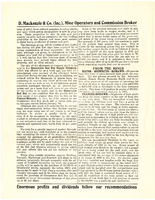Search the Special Collections and Archives Portal
Search Results
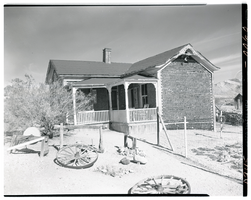
Film transparency of the famous Tom Kelly Bottle House in Rhyolite, Nevada, November 25, 1948
Date
Archival Collection
Description
Image
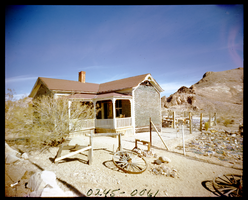
Film transparency of the famous Tom Kelly Bottle House in Rhyolite, Nevada, November 25, 1948
Date
Archival Collection
Description
Image
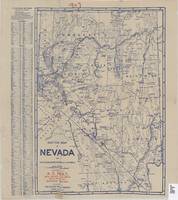
Sketch map of Nevada and the southeastern portion of California, 1906
Date
Description
Image
Hugh H. Brown Papers
Identifier
Abstract
The Hugh Henry Brown Papers consist of professional and personal papers (1902-1927) from Hugh Henry Brown, who was a lawyer in Tonopah, Nevada. The professional communication focuses on Brown's law practice dealing primarily with mining and railroad companies in Central Nevada. The papers also contain receipts from purchases made by Brown or his wife, Marjorie Moore Brown.
Archival Collection

Film transparency of Mr. L. J. (Lewis J.) Murphy and the famous Tom Kelly Bottle House in Rhyolite, Nevada, November 25, 1948
Date
Archival Collection
Description
Image

Transcript of interview with Dorothy Eisenberg by Caryll Batt Dziedziak, November 14, 2006
Date
Archival Collection
Description
Text
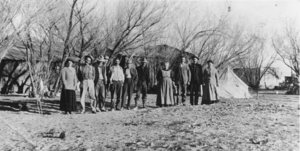
The Fairbanks' home in the background in Shoshone, California: photographic print
Date
Archival Collection
Description
From the Nye County, Nevada Photograph Collection (PH-00221) -- Series VII. Other areas in Nye County -- Subseries VII.F. Lowe Family. Shoshone, California, between 1910 and 1915. Herman Jones is second from the left. Fourth from the right is Celestia Fairbanks, grandmother of Celesta Lisle Lowe. Third from right is R. J. "Dad" Fairbanks, husband of Celestia Fairbanks and grandfather of Celesta Lisle Lowe. Shorty Harris, co-discoverer of Bullfrog, often stayed in one of the Fairbanks bedrooms. He was noted for his loud snoring, which often caused people to think he was snoring to death
Image

Transcript of interview with Byron Underhill by Joyce Moore, March 20, 2002
Date
Archival Collection
Description
Byron Underhill's father owned the first Coca-Cola bottling plant, the first beer distributorship, and the first bowling alley in Las Vegas. Byron moved here from Needles, Calif., with his family in 1927. Byron later took over the bottling plant, served in the Army as an aircraft mechanic and a glider pilot during World War II, was a private pilot who worked with Search and Rescue, played in various bands, and suggested to the Lions club that they found a burn unit at University Medical Center that is still the only one in the state
Text

Stone depot: photographic print
Date
Archival Collection
Description
Image

